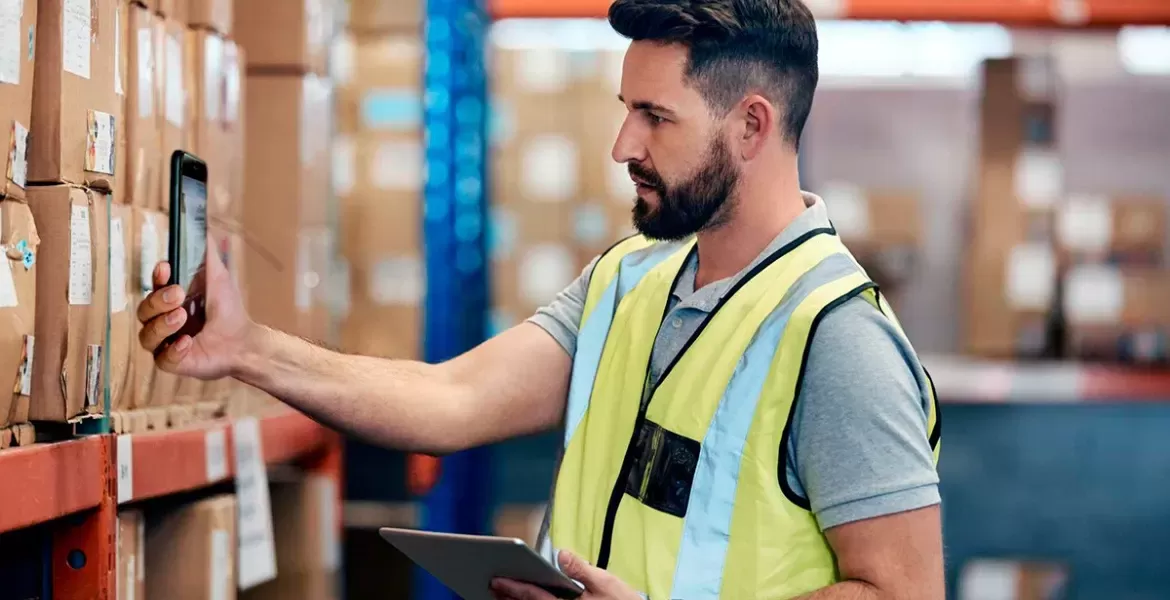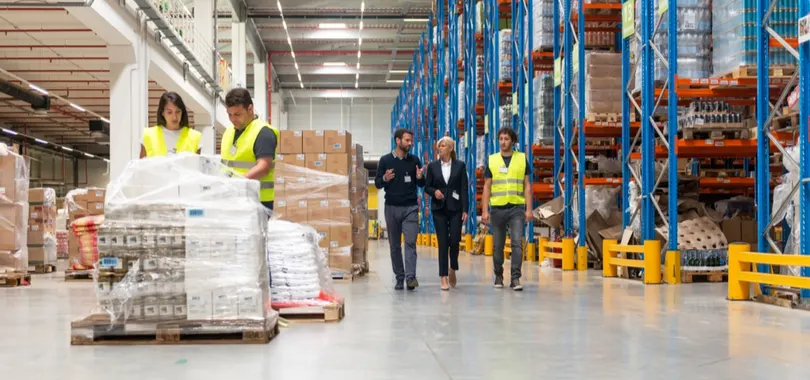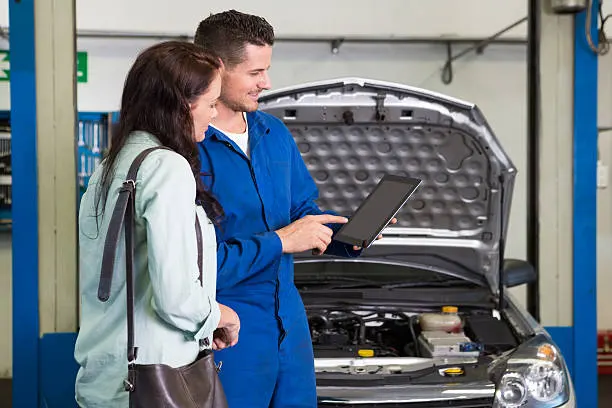
How Barcodes and Barcode Scanners Work?
What is a barcode?
Barcodes encode product information into bars and alphanumeric characters, making it more quicker and easier to check the info about a product that's sold in a store and to keep track of inventory at a warehouse. Accuracy, quickness, and cost savings are three of the main commercial advantages of barcodes, in addition to convenience and speed. Barcodes are applied to items to make them easier to be identified. They are used, among other things, on invoices to help with accounting, in warehouses to control inventory, and in retail establishments as part of the purchasing process.
We come into contact with a barcode every time we buy something, but we rarely notice it. Nonetheless, barcodes play an important role in the successful and efficient operation of our economy, from small businesses to massive global corporations.
What exactly is a barcode scanner?
An electrical device that can read data from a printed barcode is a barcode scanner, sometimes referred to as a barcode reader. Since not too long ago, a mobile device can also be utilized for barcode scanning purposes, due to the high-end processing power and quality cameras. A physical scanner needs to be connected to a computer system in order to retrieve and store information about the object. When a software-based scanner is utilized on the other hand, the data can be transferred directly to the database and the app either locally or directly to the system via the internet. As a conclusion, a barcode scanner enters data far more quickly than a keyboard. Instead of manually entering the number, which is subject to mistakes, the scanner automatically transfers the barcode data to a database or your business application.
Why companies use Barcodes?
Barcodes, believe it or not, were conceived in 1951 but did not become commercially viable until the 1970s. It's difficult to think of any technology invented in the 1950s that we still use today.
Because barcodes provide several important benefits to organizations, this 70-year-old technology hasn't altered much.
- Barcodes are an established and widely used technology;
- Using barcodes reduces mistakes;
- Barcodes are cheap and covert;
- Writing takes significantly longer than scanning barcodes;
- Barcodes boost productivity;
- Barcodes help the firm save money.
Is there a difference between a 1D barcode and a 2D barcode?
In order to make an informed choice, end users should know what types of barcodes and conditions they will scan before selecting a suitable barcode scanner, whether software or hardware based. In general, there are two groups of barcode symbologies: one-dimensional (1D, linear) and two-dimensional (2D, matrix).
1D codes are probably the most familiar. The barcode itself has to be longer in order to accommodate more numbers since it can only hold a limited number of characters. The typical UPC code in a supermarket and on consumer goods is a linear code that encrypts data using variable-width lines and spaces.
The first six numbers are the manufacturer identification number, the next five digits represent the item’s number, and the final number is referred to as the check digit which is used to help the scanner determine if the code was read correctly.
In addition to Codabar, Code 39 can also be used in automotive and defense applications, GS1 DataBar is used in healthcare, while Code 128 can be used in shipping and logistics.
2D barcodes encrypt data with a matrix or pattern. Due to the fact that the information is encoded in both the vertical and horizontal dimensions of the pattern, the squares, dots, hexagons, and other shapes can hold considerably more data than linear codes (thousands of characters).
Depending on the application, a different form of barcode will be required. Linear codes are typically employed when the accompanying data changes in time (pricing or the contents of a container). When database access is unavailable, space is restricted and bigger volumes of data are necessary, hence 2D barcodes are employed.
What data is encoded in 1D and 2D barcodes?
Up to 85 characters can be stored in a 1D barcodes (the character limit is specific to a given symbology). Since bigger numbers would make the barcode too wide to display adequately on a computer or printed page, they are better suited for smaller amounts of information due to their linear nature.
A two-dimensional method of presenting data is a 2D barcode. It is comparable to a linear 1D barcode but can store more data in a smaller space. It can often store up to 350 times as much data as a 1D barcode.
barKoder SDK Supported Barcode Symbologies
There are more than 100 different barcode types. No single barcode can do it all and no barcode has a universal business application. That’s why users must find the barcode type that works best for their specific applications.
1D Barcodes
1D barcodes are a series of black and white bars that can hold data such as a product's category, size, and color. The universal product codes for 1D barcodes can be found on the top of a product's packaging (UPCs) or elsewhere. barKoder's mobile barcode recognition SDK can read pretty much all 1D barcode types that can be met in everyday life (Codabar, Code 11, Code 25, Code 32, Code 39, Code 93. Code 128, EAN, MSI Plessey, Telepen and UPC).
2D Barcodes
The complexity of two-dimensional barcodes exceeds that of one-dimensional barcodes. They may include much bulkier information aside from text, such as prices, stock levels, or even an image of a product or a person. The Mobile Barcode Reader SDK by barKoder can scan the most heavily utilized 2D barcode symbologies (QR Code, PDF417, Aztec Code and Data Matrix).
Utilization of the mobile barcode scanner SDK by barKoder
Warehouse
Scanners are important tools for automating data collection and inventory in warehouse operations. They can read labels at lightning speed with no errors.
Information flow between the business and the client as well as within the business rises with speedy and precise data collection. The information gathered when objects and freight are scanned during order fulfillment can be shared with clients or linked systems.
When warehouse employees scan an item for shipment and reach a certain order volume level, automated operations like orders can be started. This is common in technologically advanced supply chains.

Grocery Shop
Anyone can use scanner technology today, even a little mom-and-pop shop using their own smartphone. Scanning a product with a scanner app on your mobile device will provide you with product information.
You can scan a product with the barKoder Shopping Cart App for Android to add it directly to your shopping list. That's correct! The barKoder Shopping Cart App is all about keeping you organized in every way possible.

Automotive
Empower your enterprise mobile app(s) to scan Vehicle Identification Numbers and Driver’s Licenses in order to streamline the sales process, enhance your sales CRM, or to enable your customers to easily apply for auto insurance. The possibilities are endless.

Retail Banking
The barKoder mobile data capture SDK will enable your Retail Banking apps to be equipped with a barcode scanning engine that will grant your customers an option to seamlessly scan and pay utility bills or to verify their identification documents for authentication purposes, as well as to easily apply for loans without having to be present in the bank itself for extended periods of time. And most importantly, you can incorporate barcode scanning of driver's licenses or related ID documents as part of the security process and identity verification.

Healthcare
Barcodes are a powerful tool. Integrating them into the workflows of your medical care facilities, healthcare manufacturing processes and pharmacies can significantly increase the productivity of your personnel, leading to a reduced business cost across the board. You can empower your documentation to provide a quick access to all healthcare professionals to crucial information such as therapy details and intake, illness and general histories of patients and so much more, bringing new levels of awareness and ability for quick reactions by having less downtime. And in these Covid-ridden times, your security can quickly and easily verify visitor authenticity and/or vaccination certificates.







